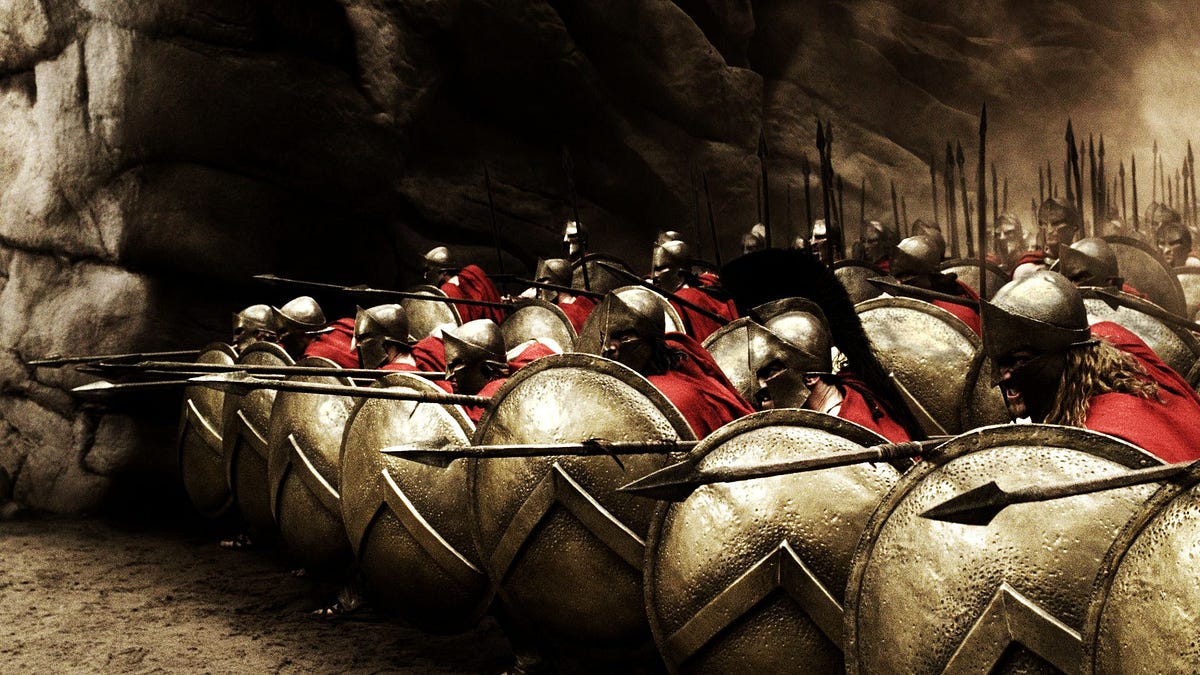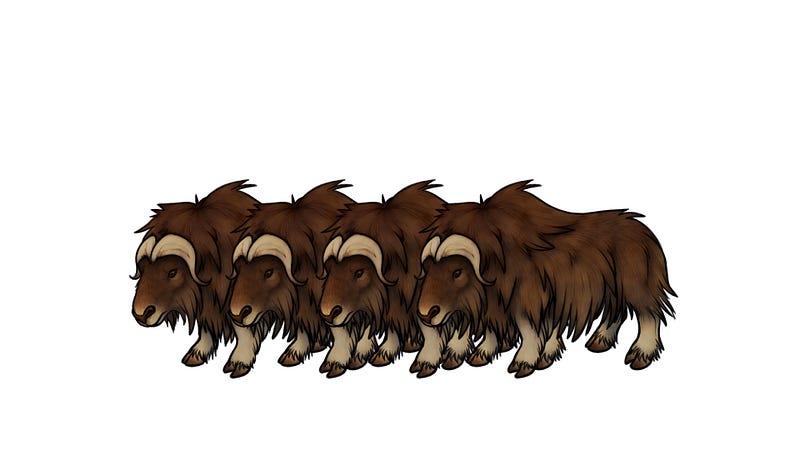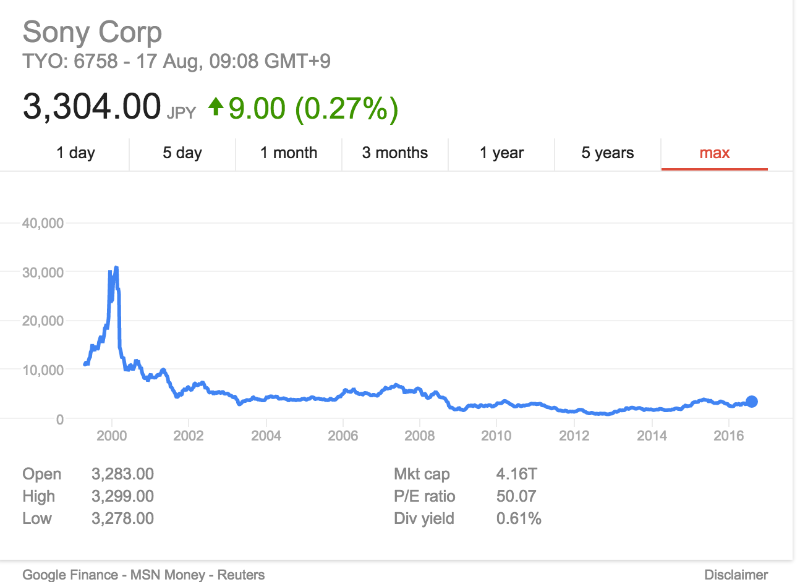
The Four Oxen — An Aesop Fable

A Lion used to prowl about a field in which Four Oxen used to dwell. Many a time he tried to attack them, but whenever he came near they turned their tails to one another so that whichever way he approached them he was met by the horns of one of them. At last, however, they fell a-quarrelling among themselves, and each went off to pasture alone in a separate corner of the field. Then the Lion attacked them one by one and soon made an end of all four.
United we stand, divided we fall.
When most of us read this fable we think of sport or war. When most of us think about this fable we think that it is not relevant to us. When most of us spend more time in the workplace than anywhere else, let’s think of this fable in the context of the workplace.
Imagine the oxen as departments in a large corporation, maybe they might be business units. If you are a smaller business think of the oxen as people in your business.
(The Four) Octopus Pots / Business Units / Division Leaders
In Japan the octopus pot is a variant of the fish trap and is used to catch octopuses.
Fishermen leave octopus traps on the seabed for days. In time, octopuses enter these pots out of curiosity or for shelter, no bait is required. When the fishermen bring the pots back to the surface, the octopus does not try to escape, they stay put in their pot.
In 1999, Sony was in pole position to own the digital music market. Ultimately, Sony failed and Apple won.
Sony failed despite a monopoly and a huge head start with the Walkman and numerous digital music players. Let us remember the end-to-end product development opportunity that Sony had. Not only did they manufacture devices, but they owned a music label, had a powerful brand and owned premium movie content. Sony had all the ingredients to succeed.
Most companies act when they have a burning platform, when they are forced to or when they have no choice, often that is too late. Sony was with a huge stock crash hit in 2000 and once they felt bottom-line pain, they decided to act.
In 2005, Sony recruited British executive Sir Howard Stringer as their first non-Japanese CEO.
His challenge was mammoth.

Too Many Octopus Pots!
In his opening speech to staff, Stringer said: “Sony is a company with too many silos!”
The term “Silo” was unfamiliar to the Japanese audience. This is because Japan grows rice rather than grain (which is housed in silos) so the term silo is not well known in Japan.
Scrambling for a synonym, the translator thought fast and settled on “Octopus Pots”.
Stringer soon discovered that the Sony silos were all competing with each other and internal rivalry was stronger than rivalry with competitors. As a result, hundreds of Sony-made products were incompatible with each other.
Stringer organised a side-by-side display of Sony gadgets to demonstrate how ludicrous this all was. The silos responded with pride in their own creativity rather than shame in their lack of teamwork.
Incredibly, at the Computer Dealers’ Exhibition (Comdex), which was the largest computer trade shows in the world at the time, Sony launched two digital music devices.
This was not because the company had over innovated or held an internal hackathon and created two competing products. Rather it was due to a deep division within the company. While they should have been working together, the different silos had created the two separate devices.
Neither had shared knowledge with the other.
Neither worked together.
Neither saw themselves on the same team.
Divided We Fall/Fail
According to this Harvard School of Public Health “Workplace and Health” report, 44% of working adults say their job adversely affects their health. Lower skilled workers claim their jobs causes them dissatisfaction, high-stress levels, poor eating and sleeping patterns.
A few Thursday Thoughts ago we explored the concept of Psychological safety. This is the shared belief that we are psychologically safe to take risks when we are in a team environment. If you are in a company, organisation or team and you feel you cannot voice your opinion for fear of loss of self-image, status or even career then you are not in a psychologically safe environment.
This often comes hand in hand with a company with cultural and operational silos.
The word colleague comes from the French word collègue and Latin collega , which means ‘partner in office’. While this is what it should mean, even when colleagues from varying divisions attempt to collaborate there is deep-rooted suspicion of their motivations. This is why changemakers and intrapreneurs in large corporations leave and leave quickly. Unless there is stubborn leadership to ensure change happens, it simply will not. Even when a leader initiates change, she still needs middle management to drive that change. This is why a leader cannot create an organisational strategy alone, a leader always needs to bring people on the journey to create a common, agreed upon direction for the company, a common narrative that everyone buys in to.
Divide and Rule / Divide and Conquer exists in both politics and sociology. This refers to gaining and maintaining power by breaking up larger concentrations of power into pieces that individually have less power than the one implementing the strategy.
This breaks up existing power structures and prevents smaller power groups from linking up, causing rivalries and creating discord among the people.
This archaic approach is enabled by the way corporations and businesses are structured and run. As we explore in this week’s Innovation Show it does not need to be the case. Many businesses rely on managerial hierarchies and organizational structures developed for the 19th and 20th century. We don’t know any better, but there are alternatives. Holacracy is a revolutionary self-management practice now used by 1000’s of companies.
A Circle of Trust
A mere 12% of Fortune 500 companies in 1955 were still on the list in 2016. The other 88% have either gone bankrupt or were merged or acquired. Many of the companies on the list in 1955 are victims of irrelevance, “me-too propositions”, disruption (through digitization or otherwise) and poor leadership.
Much of the poor leadership was due to mismanagement of vested interests, status quo and change blockers.
For companies to thrive at any size there needs to be a high level of trust. Trust that your colleague is fighting the same fight as you. Trust that they are rowing in the same direction as you. Trust that we all know where we are going and that we believe in that direction.
With so much competition and disruption in our world today why waste energy on internal bickering? It is going to be a big enough war to fight competition, recruit the right people and face the influx of disruptive forces.
“Whatever comes out of these gates, we’ve got a better chance of survival if we work together. If we stay together we survive” — Maximus Decimus Meridius
On this week’s Innovation show, we talk to founder and pioneer of Holacracy® Brian J. Robertson. EP 62: What is Holacracy® and how it can help you
Holacracy is a revolutionary self-management practice used by companies, like Zappos, Blinkist and the David Allen Company and developed for the way business is done today.
Brian Robertson is an experienced entrepreneur, organizational pioneer, and author of the book Holacracy: The New Management System for a Rapidly Changing World. He is most well-known for his work developing Holacracy®, a self-management practice for running purpose-driven, responsive companies. Brian currently works as a business partner at HolacracyOne, the organization he launched to steward the Holacracy practice and assist other organizations seeking to adopt it. Holacracy® has been adopted by over 1,000 companies around the world to date.
We talk about his background, why he pioneered Holacracy®, who thrives in a Holacracy and how you can get started.
The show is broadcast on RTÉ Radio 1 extra 3 times weekly and is on iTunes, TuneIn Stitcher Player FM and Google play. The website is here and below is Soundcloud.